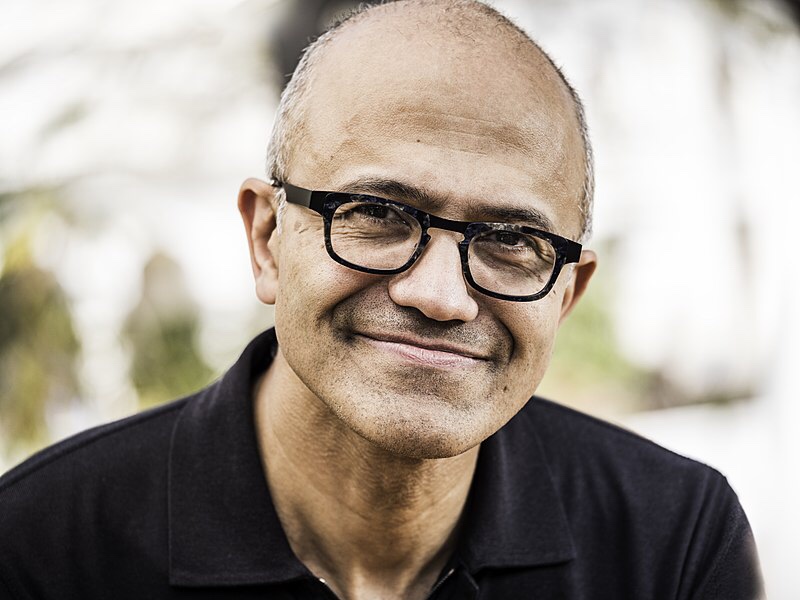It’s been almost five years since Satya Nadella became the third chief executive of Microsoft. When he took over, the company was in the midst of an identity crisis. Many felt Microsoft had become lethargic, content to ride a rapidly dissipating wave of success while competitors charged forward with new, innovative ideas.
But in those five years, Nadella has conducted a stunning turnaround. With increased efforts on attracting young talent and changing the “old guard” culture, along with a focus on artificial intelligence and cloud computing tools, Nadella has done more than return the company to relevance.
He’s made Microsoft cool again.
But how did he do it? How did Nadella inspire change in a company as massive as Microsoft?
“You need new ideas and you need new capabilities, but the only way you’re going to get those new ideas and new capabilities is if you have a culture that allows you to grow those,” Nadella said in a recent interview with Caixin Media.
Nadella went on to credit famed Stanford psychologist Carol Dweck and her book Mindset as the inspiration for his company’s culture change.
In Mindset, Dweck extols the values of cultivating a growth mindset. Citing decades of research, she shows that individuals who believe their talents can be developed through hard work, good strategies, and input from others (i.e., a growth mindset) tend to achieve more than those who believe their talents are innate gifts with finite development potential (i.e., a fixed mindset).
“In [the growth] mindset, the hand you’re dealt is just the starting point for development,” explains Dweck in Mindset. “Everyone can change and grow through application and experience.”
Nadella describes the concept as “very simple.”
He says, “If you take two kids in school, let’s say one of them has a lot of innate capability but is a know-it-all. The other person has less innate capability but is a learn-it-all. You know how that story ends. Ultimately, the learn-it-all will do better than the know-it-all. And that, I think, is true for CEOs. It’s true for companies.”
In my new book, EQ Applied: The Real-World Guide to Emotional Intelligence,I delve into Dweck’s work and explain how you can you build and maintain a growth mindset.
It all begins with these three steps:
1. Never stop learning.
Nadella correctly identifies one of the biggest obstacles to achieving a true growth mindset:
“The day the learn-it-all says, ‘I’m done’ is when you become a know-it-all,” says Nadella. “And so to understand that paradox and to be able to confront your fixed mindset each day is that continuous process of renewal.”
To maintain a growth mindset, you can’t consider yourself an expert–because the minute you do, the learning stops.
Instead, consider yourself a student, and you’ll continue to grow indefinitely.
2. Learn from the past. But keep looking forward.
Once you’ve achieved a measure of success, the tendency is to simply rinse and repeat.
But there’s a problem with falling into that pattern–it leads to complacency and stagnation.
“What has happened in the past has happened,” says Nadella. “The way I’m going to be measured going forward and the way I should measure myself going forward is, ‘What exactly am I going to do tomorrow and the day after?'”
If you keep your eyes focused on the rearview mirror, you’re going to crash. Instead, learn from the past, but keep focused on what’s ahead.
3. Experiment.
Without experimentation and mistakes, there can be no true learning. In contrast, if people feel safe to share new ideas and try new things, the result will be a culture of learning and growth.
This was illustrated perfectly at Microsoft a couple of years ago, when the company launched a Twitter bot named Tay. The goal was to advance how artificial intelligence communicates with real people in real time.
But things quickly went wrong when hackers and trolls manipulated Tay into spewing racist profanity. Microsoft shut down Tay after just 16 hours, issuing an official apology.
The key lesson, though, was in Nadella’s email to the team after this spectacular fail:
“Keep pushing, and know that I am with you,” Nadella wrote. “[The] key is to keep learning and improving.”
It appears that Microsoft’s chief executive practices what he preaches.
Kudos to Nadella for striving to make Microsoft a company full of “learn-it-alls.”
So far, it’s been great for business.
Enjoy this post? Check out my book, EQ Applied, which uses fascinating research and compelling stories to illustrate what emotional intelligence looks like in everyday life.
A version of this article originally appeared on Inc.com.


